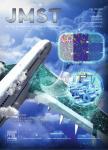版权所有:内蒙古大学图书馆 技术提供:维普资讯• 智图
内蒙古自治区呼和浩特市赛罕区大学西街235号 邮编: 010021

作者机构:Shenyang National Laboratory for Materials ScienceNortheastern UniversityShenyang 110819China Key Laboratory for Anisotropy and Texture of Materials(Ministry of Education)Northeastern UniversityShenyang 110819China Department of Chemical and Biomolecular EngineeringInstitute for Corrosion and Multiphase TechnologyOhio UniversityAthens OH 45701USA
出 版 物:《Journal of Materials Science & Technology》 (材料科学技术(英文版))
年 卷 期:2024年第171卷第4期
页 面:129-138页
核心收录:
学科分类:080503[工学-材料加工工程] 0808[工学-电气工程] 08[工学] 0805[工学-材料科学与工程(可授工学、理学学位)]
基 金:supported by the National Natural Science Foundation of China(Nos.52101078,U2006219) the National Key Research and Development Program of China(No.2020YFA0907300) the Fundamental Research Funds for the Central Universities of the Ministry of Education of China(Nos.N2102009,N2002019) Liaoning Revitalization Talents Program(No.XLYC1907158)
主 题:Extracellular electron transfer Microbiological corrosion Geobacter sulfurreducens Outer membrane c-type cytochromes Exogenous flavins
摘 要:Microbes can cause or accelerate metal corrosion,leading to huge losses in corrosion damages each *** sulfurreducens is a representative electroactive bacterium in many soils,sediments,and wastew-ater *** has been confirmed to directly extract electrons from elemental ***,little is known about the effect of electron shuttles in *** corrosion on stainless *** this study,we report that exogenous flavins promote iron-to-microbe electron transfer,accelerating micro-bial *** caused 1.3 times deeper pits and increased electron uptake(with 2 times increase of i_(corr))from stainless steel when riboflavin was added to the culture ***-deficient mutant data suggest that *** utilizes riboflavin as a bound-cofactor in outer membrane c-type *** finding that,in the presence of microbes,riboflavin can substantially accelerate corrosion highlights the role of flavin redox cycling for enhanced iron-to-microbe electron transfer by *** and provides new insights in microbial corrosion.